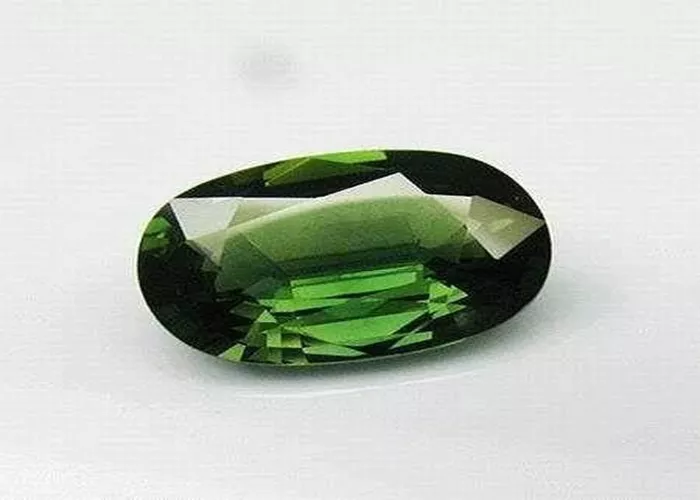Green sapphire is a stunning and unique gemstone that has gained popularity in recent years. Often overshadowed by its more famous blue counterpart, green sapphire offers a rich palette of colors and exceptional qualities. In this article, we will explain in detail what green sapphires are from a professional perspective, including their characteristics, formation process, evaluation standards, and market value.
What are green sapphires?
Green sapphires are a variety of sapphire that ranges in color from light green to deep forest green. They are a type of corundum, which is a mineral composed of aluminum oxide. Like other sapphires, green sapphires are prized for their durability, beauty, and rarity.
Green sapphires are found in many parts of the world, including Australia, Madagascar, Sri Lanka, and Tanzania. They are often used in jewelry, including rings, necklaces, and earrings.
Characteristics of green sapphires
Green sapphires have a number of unique characteristics that distinguish them from other types of sapphires. These include:
Color: The color of green sapphires can range from light green to deep forest green. The intensity and saturation of the color can vary depending on the concentration and distribution of trace elements within the crystal structure.
Clarity: The clarity of green sapphires refers to the presence or absence of inclusions or blemishes within the gemstone. The fewer inclusions or blemishes, the more valuable the gemstone is.
Cut: The cut of green sapphires refers to the way in which they have been shaped and faceted. A well-cut gemstone will have excellent symmetry, proportions, and polish, which will enhance its brilliance and overall beauty.
Carat weight: The carat weight of green sapphires refers to their mass. The larger the gemstone, the more valuable it is.
Formation process of green sapphires
Green sapphires are formed deep within the Earth’s crust under high-pressure and high-temperature conditions. The process of sapphire formation begins with the cooling of molten rock, which results in the formation of igneous rocks. Over time, these rocks are subjected to heat and pressure, which causes the minerals to recrystallize and form sapphires.
The green color of green sapphires is due to the presence of trace elements such as iron and titanium within the crystal structure. The concentration and distribution of these trace elements determine the intensity and shade of the green color.
Evaluation standards for green sapphires
When evaluating green sapphires, there are several factors that must be taken into consideration. These include color, clarity, cut, and carat weight.
Color: The color of green sapphires is one of the most important factors in determining their value. The most valuable green sapphires are those that exhibit a deep, rich green color.
Clarity: The clarity of green sapphires refers to the presence or absence of inclusions or blemishes within the gemstone. The fewer inclusions or blemishes, the more valuable the gemstone is.
Cut: The cut of green sapphires refers to the way in which they have been shaped and faceted. A well-cut gemstone will have excellent symmetry, proportions, and polish, which will enhance its brilliance and overall beauty.
Carat weight: The carat weight of green sapphires refers to their mass. The larger the gemstone, the more valuable it is.
Market value of green sapphires
The market value of green sapphires is influenced by many factors, including rarity, color, clarity, and size. For example, a large, high-quality green sapphire with a deep green color and excellent clarity can be worth tens of thousands or even hundreds of thousands of dollars.
Green sapphires are often used in jewelry, including rings, necklaces, and earrings. They are particularly popular as engagement ring stones because of their unique color and rarity.
What Are the Different Shades of Green Sapphire and How to Identify Them?
Light Green Sapphire: This shade of green sapphire is pale and almost transparent. It is often mistaken for yellow sapphire or citrine. To identify light green sapphire, look for a faint green hue that is visible in bright light.
Mint Green Sapphire: This shade of green sapphire is light and refreshing, with a subtle hint of blue. To identify mint green sapphire, look for a pale green color with a cool undertone.
Olive Green Sapphire: This shade of green sapphire is a deep, earthy green with a brownish undertone. To identify olive green sapphire, look for a rich green color that is reminiscent of the color of olives.
Forest Green Sapphire: This shade of green sapphire is dark and intense, with a deep green color that resembles the color of a forest. To identify forest green sapphire, look for a dark green color with a hint of blue.
Yellow-Green Sapphire: This shade of green sapphire has a yellowish undertone that gives it a warm, sunny appearance. To identify yellow-green sapphire, look for a green color that is tinged with yellow.
Blue-Green Sapphire: This shade of green sapphire has a blue undertone that gives it a cool, refreshing appearance. To identify blue-green sapphire, look for a green color that is tinged with blue.
Conclusion
In summary, green sapphires are a variety of sapphire that ranges in color from light green to deep forest green. They are formed deep within the Earth’s crust under high-pressure and high-temperature conditions and are evaluated based on factors such as color, clarity, cut, and carat weight. While green sapphires are less well-known than other types of sapphires, they are highly prized for their unique color and rarity. As a jewelry appraiser, I recommend that when purchasing green sapphires, one should choose reputable merchants and carefully check the quality and certificate of the gemstone to ensure its value and authenticity.
Related topic:
- Why Is Fancy Blue Sapphire the Gem of Choice for Royals?
- 5 Reasons to Choose a David Yurman Blue Sapphire Necklace
- Why Choose a Pearl Necklace with Blue Sapphire Pendant?


